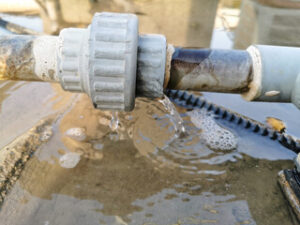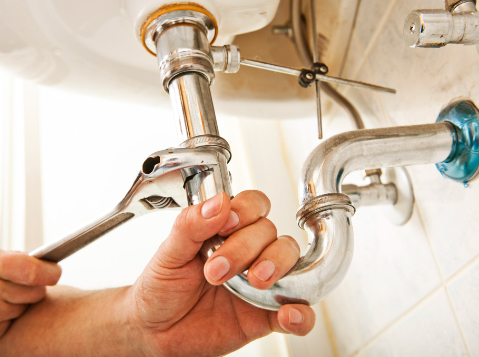Cincinnati Leak Detection refers to the various methods used to monitor and identify leaks of liquids or gases. These methods range from hardware sensors to software-based data monitoring.
Water is becoming a scarce commodity, and it’s important to detect leaks early to prevent waste. Check your water meter and write down the numbers, then wait several hours without using any water. If the numbers have changed, there is a leak somewhere in your system.
Water leaks can cause significant damage to buildings and other structures if they are not properly monitored. Leak detection systems can minimize the damage caused by a leak by quickly identifying and isolating the affected area. This helps to protect the environment, property and workers by minimizing both spill volume and duration.
Pipeline leaks can release dangerous chemicals and gases into the environment, which is why it’s important for companies to have efficient and reliable leak detection equipment in place. Using a system that can monitor for leaks and alert the company to their location allows them to take action before a problem occurs, which is especially critical in areas such as wastewater treatment plants that operate with toxic liquids that can cause death or serious illness if released into the atmosphere.
Having an active leak detection program is also crucial to reduce unreported leaks from pipeline infrastructure. Historically, many leaks go undetected until they reach the surface and are visible, but using acoustic monitoring can help to identify these issues more quickly. This can reduce costs by reducing water losses and energy losses due to leaks.
Homeowners can also benefit from having a reliable and effective leak detection system in place. This helps to protect homes from costly and damaging water leaks that can result in mold, bacteria, foundation problems and more. Water leaks are often more costly to homeowners than break-ins and fires combined, which is why it’s important for them to have a system in place that can detect issues as they happen.
Some types of leaks are more difficult to detect than others, but with modern technology and advanced methods, it’s possible to pinpoint the exact location of a leak so that it can be quickly repaired. For example, by monitoring a pipeline’s pressure and comparing “metered out” volumes to “metered in” volumes, it’s possible to quickly locate any areas that have suffered from a leak.
Another type of leak detection uses sensors that can identify a leak by analyzing the chemicals, gases or other materials in a system. For instance, some use acoustic monitoring that can identify a leak by listening for the whooshing sound of a leak and using a highly sensitive transducer to detect the noise. Other methods use a computerized system that compares readings from sensors to identify any anomalies and alert the operator.
Economical benefits
Leak detection equipment reduces the risk of expensive water loss and allows technicians to locate leaks before they cause significant damage. Water losses cost water agencies money, force them to draw more water from lakes and streams, putting strain on ecosystems, and raises the risk of future pipe failures. These costs are not usually factored into water agency decision-making. Water loss can also cause property damage to homes and businesses that receive service from the same pipe system. Water leaks can lead to mold and mildew in crawl spaces, drywall and other interior structures. These repairs are often very costly.
Whether used for oil, water or natural gas, pipelines are essential to the economy. Companies must carefully manage the production and storage of these resources in order to avoid product loss. This is particularly important for pipelines that carry petroleum products and chemicals. A reliable, effective leak detection system can minimize the amount of materials that are lost and help protect a company’s profit margin.
The cost of implementing a leak detection system is often offset by the savings generated by the system. Detecting leaks early and performing repairs before the damage is too extensive saves money on repair costs, water usage, and energy bills. In addition, reducing the number of leaks in a pipeline system decreases the amount of waste produced by the pipelines.
In some cases, a leak detection system can even reduce the cost of operating a pipeline. A low-probability, high impact event, such as a pipeline rupture, can be much less expensive to fix than a pipeline replacement.
Using advanced leak detection methods, such as digital acoustic technology, allows technicians to identify and pinpoint the location of a leak without damaging the surrounding property. This method of locating a leak enables the technician to quickly and easily perform repairs and restore service. It eliminates the need for excavation, which is not only more expensive but can also harm trees, landscaping and other properties. Combined with a proactive maintenance program, this technique can significantly reduce the cost of managing a pipeline system and increase operational efficiency.
Asset Management
Leak detection can help reduce non-revenue water (NRW) for water utilities by identifying and alerting homeowners of their high water usage. This data can be transferred to the water utility’s billing solutions or incorporated into their asset management systems. This information can help identify and prioritize repair work orders to reduce NRW.
Typical methods for leak detection include hardware-based devices such as acoustic emissions detectors, fiber optic sensors, and negative pressure detectors; and software-based techniques using computer models to constantly monitor variables including temperature, pressure, flow, and density to detect upsets or potential leaks. Models may be simple or complex, depending on the type of product and pipeline operation. These include computational pipeline monitoring systems, mass-volume balance and dynamic model based systems, and fluid characterization systems.
There are also a number of different methods for locating a suspected leak, which range from the biological, such as experienced personnel walking along a pipeline looking for unusual patterns, smells or sounds; to the highly automated and sophisticated, such as the use of satellite sensors. Regardless of the method used, leak detection can help minimize the impact of a pipeline incident and improve overall system performance.
Fuel Leak Detection
In addition to environmental protection, there are economical benefits from leak detection. The loss of products, including oil, gas, and chemicals, due to leaks is substantial and can significantly reduce companies’ profits. With a properly installed system, the losses due to these types of leaks are greatly reduced.
Leak detection equipment is designed to work without interfering with the normal operations of a facility or halting production. Rather, these devices monitor critical areas and report any indications of a potential problem. This allows managers to take action before a leak becomes a disaster. This is especially important in the case of fuel leaks, which can quickly cause damage to plant equipment and even result in fires or explosions.
There are several different types of leak detection systems. Some use chemical reagents to detect leaks by reacting with them. Others use high voltage to detect defects by causing a visible arc or spark when they occur. Still, others use acoustics to detect leaking fluids by listening for the sound that they produce. Finally, there are a number of ways to find the source of a leak in the pipeline itself, such as fluorescent leak detection. This method uses a circulating dye that is mixed with the host fluid and then illuminated when it contacts a leak.
A key aspect of the economic and ecological benefits of leak detection is that it allows for a much faster response time to the problem. This is particularly important in the case of fuel leaks, where a rapid response can save valuable equipment and minimize the impact on personnel and the environment.
The precise impact of a leak detection system on the severity of a particular incident can be difficult to determine, however, as it relies on factors such as the size of the spill, the distance that the material has traveled and the velocity of its flow. These elements are difficult to predict and can change considerably.

